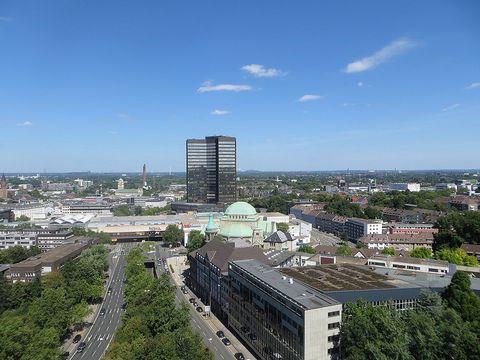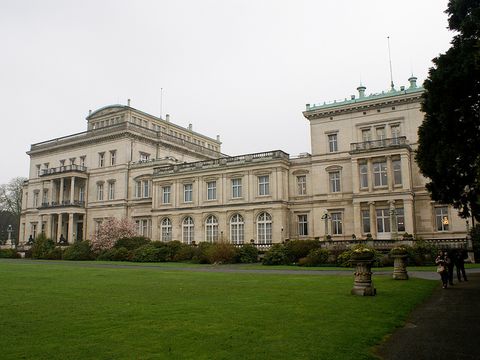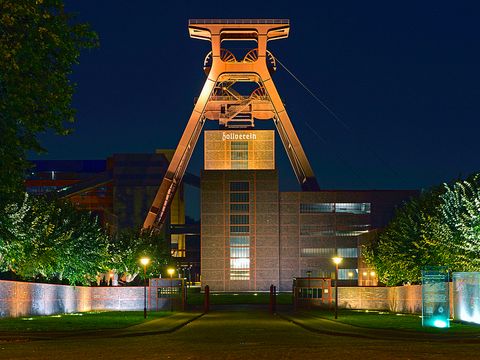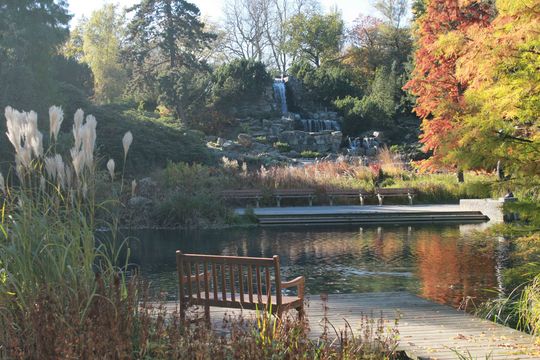The metropolitan city of Essen is located at the heart of the Ruhr region conurbation. This former industrial powerhouse has increasingly become a centre of culture and shopping. Despite its size, the city is surprisingly green with numerous parks and lakes which offer opportunity for relaxation and recreation.
Facts
582,760 Inhabitants ¹
100,315 Students ²
4 Higher education institutions ²
WELCOME TO ESSEN
If you come to Essen on a Saturday, don’t be surprised to find the streets filled with thousands of people. Many people like going downtown to shop, visit museums or spend the evening at one of the many theatres. Essen, a city in the middle of the Ruhr region conurbation, is a shopping paradise and cultural centre.
But it hasn’t always been that way. Like the entire region, Essen still bears the traces of its heavy industrial past. You can still see the old collieries on the outskirts of town. The , a former coal mine at the north end of the city, was designated a UNESCO World Heritage Site and draws many tourists to the city every year. Essen (along with the entire Ruhr region) was the European Capital of Culture in 2010 and impressed visitors with an interesting mix of history, art and lifestyle.
The steel manufacturing conglomerate “ThyssenKrupp” has left its imprint on the entire city. The family-run company, founded in the 19th century, has significantly shaped the history of Essen and all of Germany for that matter. You can learn more about the impressive history of the Krupp family and their company at the , which exemplifies the power and wealth the family amassed.
Tip
If you want to gain a good first impression of Essen’s cultural diversity, hop aboard tram line 107. This is Essen’s “cultural line” which takes you to all the interesting sights in Essen, such as the Zeche Zollverein, Aalto Theatre and the Folkwang Museum.
Interview
YINGQIAN FROM CHINA
LIVING IN ESSEN
Many students like living in the northern districts around the University of Duisburg-Essen. Lots of young people live in the south district and the Rüttenscheid quarter on the opposite side of downtown. The is definitely worth seeing. Considered to be Germany’s first garden city, it represents the human-friendly living standards at the beginning of the 20th century.
In the immediate vicinity of Margarethenhöhe, you’ll find the Gruga Park, the largest park in the city. This is where the city’s inhabitants go to relax, play sports or meet with friends. The park offers something to art enthusiasts as well; sculptures and installations are situated throughout the park grounds. If you head further south, you will reach the Baldeney and Kettwiger Lake where you can go inline skating, cycling, surfing and canoeing.
We recommend taking a tour of the Zeche Zollverein or seeing an exhibition at the . Newly rebuilt in 2010, the museum has made a name for itself with a number of fascinating exhibitions of classical and modern art.
Because Essen is home to people from so many different countries and cultures, the city has a colourful range of cuisine to choose from. Around the Rüttenscheider Stern, you’ll find a wide array of small and interesting dining locales which cater to every kind of taste. There are several culinary festivals in Essen, especially in the summer time. At these festivals, many restaurants present their cuisines and you can try out a wide variety of dishes.
#SmallTown #BrickHouses #Beach




